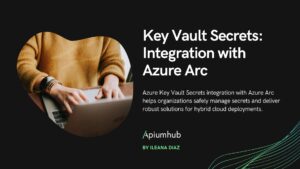Table of Contents
Since an increasing number of companies are migrating their operations to the cloud, the cloud industry is likely to become more advanced. The IT industry is all up for cloud native architecture and software development that is way better than the traditional architecture of developing monolithic software applications.
Following the cloud-native software development trend, cloudbees has recently come up with an advanced CloudCore. Developers can leverage CloudCore to create, develop, deploy applications for Kubernetes. This new idea is based on JenkinsX that enables developers to deploy Kubernete’s microservices.
The beauty of cloud-native applications is that they are independent of any underlying architecture and are designed to operate in sync with different cloud environments. Every cloud application has four important elements: “Continuous delivery, Containers, Dynamic Orchestration, and Microservices”
Let’s dive into the elements mentioned above.
Cloud native architecture elements
1. Continuous Delivery
Replicating applications for building an efficient deployment workflow has become important than ever. A code repository enables developers to update code and, moreover, they can clone an application to recreate environment and configuration. Having this process in place results in the use of individual workstations to write the code and push it to production. This ensures continuous delivery of user compliance.
Recently pressed by continuous delivery, Oracle has announced a new open-source Fn project, based on function as service endeavors. This is done to set the pace for continuous deployment for other industries.
To automate the non-human part in software development, Jenkins is preferred to other platforms. Being an open source automation server, Jenkins facilitates continuous integration which results in continuous delivery.
But why Jenkins in CI/CD?
Jenkins is highly advanced and, therefore, it can do many things in the CI/CD world. However, the constraint is to find out the right plugins, configuration, and code in Jenkinsfile while making them work together.
The best part of Jenkins X is developers can write one command like jx create or jx import to get the repository, source code, git and application created is deployed to Kubernetes automatically. Moreover, development teams do not have to mind map on creating the Kubernetes YAML to run their application on Kubernetes, how to package software as docker images, etc. as everything is automated for you which further ensures continuous integration and continuous deployment.
2. Dynamic Orchestration
Orchestration is critical to the SDLC to smoothen, trigger, and advance the provisioning and configuring of applications. Taking advantage of continuous deployment, new web servers, databases, and load balancers are integrated to automate the DevOps process.
3. Containerization
Containers are no different from virtual machines. Just like you can live multiple operating systems on one machine with the help of virtual machines, containers have made easy to live a number of apps on one virtual machine.
The process of containerization rolls out libraries, configuration files, and binaries that hasten continuous deployment and integration.
The word container represents the wrapping of all libraries and applications into a single set while putting an interface on it to ensure its continuity. Docker is commonly used by developers for the development of containerized applications.
Containerization completes two simple processes.
- A Unique Packaging – Docker possess a user-friendly packaging format that wraps an application and all its accessories into a single set. A ton of companies has taken advantage of Docker to develop new tools for developing, monitoring and manipulating containerized applications.
- Application Isolation – Just line Docker’s engine, a container engine runs a containerized application package on a machine. An engine works more than just run wrapped processes. A container engine can limit what the app can see and do on the machine by running an application image.
4. Microservices
Microservices are cloud-oriented services that deal with different cloud operations. These services work in close association with the underlying application and, therefore, developers can make changes at any point in time without amending other services. This behavior of microservices makes them scalable as compared to traditional applications that are deprived of automation.
Understanding the pillars of Cloud Native Architecture won’t make sense until you do not understand the infrastructure of cloud it. You need to know what is Cloud native architecture so that you can run your code successfully.
The Cloud Native Infrastructure (Set Up)
The Native Cloud term has arrested minds of marketing departments, and software engineers find glory in it. In simple terms, cloud-native is the evolution of technology in the ecosystem of public cloud providers.
Cloud native architecture is based on useful abstractions, managed by software, controlled by APIs, and has the aim of running applications smoothly. Running applications with such infrastructure results in a new pattern for the efficient management of that infrastructure.
Abstractions play a significant role in hiding complexity while providing consumers with a user-friendly experience. The irony is they lead developers to use a sophisticated technology but also limit the use of technology. From high-level technology like the abstraction of physical servers by VMs to low-level technology like how TCP abstracts IP, they are completely worth it. Consumers can scale up the stack and carry out the reimplementation of low layers.
Cloud native infrastructure is able to provide its abstractions by abstracting the underlying IaaS services. The IaaS is in control of the new layer that exposes its APIs that a consumer control.
Elastic cloud with kubernetes
Elasticsearch is a well known and advanced robust document store and search engine. The UI companion of Elasticsearch is Kibana that streamlines visualization and querying.
Elasticsearch offers an array of features and the most useful for log management are as follows.
- It can store data from a number of log sources
- In contrast to traditional data stores, it does not need schema definitions and can find data types.
- Large amounts of data can be stored.
- It can make research easily through a heavy dataset.
What is the sole aim of Cloud Native Architecture?
Cloud Native architecture is a unique approach to upgrade prototyping, designing, building, and operating of applications, per the infrastructure-as-a-service architecture. It unifies new operational tools with services that encompass orchestrators, continuous integration, and container engines. The idea is to achieve higher speed, scalability, and quality.
# Speed: Organizations, big or small, try hard to get to the core of automation to meet compliance by shortening “time to market”. Here comes the role of DevOps that collaborates the dev and Ops team. Not only does cloud-native augment the cultural shift but it also proliferates incremental improvements from inception to development to testing.
Moreover, it eliminates risk factors like bugs, slow loading speed, etc. Since cloud-native accelerates change, cloud-native beginners have hopped on the AWS technical essentials course to understand the dynamics of the cloud while becoming more responsive towards the software development lifecycle.
# Scale: With the growth of software as a service business, scalable development to support growing user base, managing cost, etc., has become the need of the hour.
# Margin: Pay for what you use is a trend in the world of infrastructure-as-a-service. It means you only pay for additional resources when you win new leads. Cloud totally eliminates upfront CAPEX and Opex while allowing you to scale up and scale down business, per product requirements.
Benefits to reap out of Need Cloud-Native Applications
Cloud-native architecture is a term used for the applications that are built on the cloud. The development of cloud-native applications spurs the demand for dedicated feature teams that are aware of the technicalities of the cloud while being Agile. This fosters resilience, portability, agility, etc., across your cloud network.
#Automate yourself with Cloud
When you accommodate Cloud-native infrastructure, it means you have switched cloud goals from IT cost savings to successful deliverables. With the help of SaaS, businesses can prototype, design, develop, test, and build and deliver applications in no time.
#Enable teams to focus on resilience.
The advent of cloud-native applications has broken down legacy infrastructure. Cloud helps you engineer applications in a robust way which further ensures resilience in the future. Developers and architects can access their systems anytime, anywhere on the cloud which enables fast response, more productivity, and better results.
#Gain greater flexibility
Now, Public cloud providers offer a lot of services at affordable prices. But most organizations are interested in more than one platform. And when the cloud-native approach is there, enterprises easily run their applications on the public and private cloud without making any changes and spending dollars.
#Align operations with the overall business
Where there is the cloud, there is agile development. Enterprises have started leveraging automation by developing a lean mindset towards it. Agile promotes cross team interactions and, therefore, it minimizes the risk of failure. Sprints streamline workflow by dividing tasks, or you can call them Epics. Automation ensures live patching and upgrades that reduce downtime and therefore need for operational experts.
The choice is yours!
If you really want to make the most out of efficiency and agility benefits of cloud, undergoing a lift and shift operation is that you need to do. Take the plunge and migrate your applications from on-premises to the cloud. Having a cloud-native platform in place, you can focus on customer complaint without paying heed to virtual servers management.









